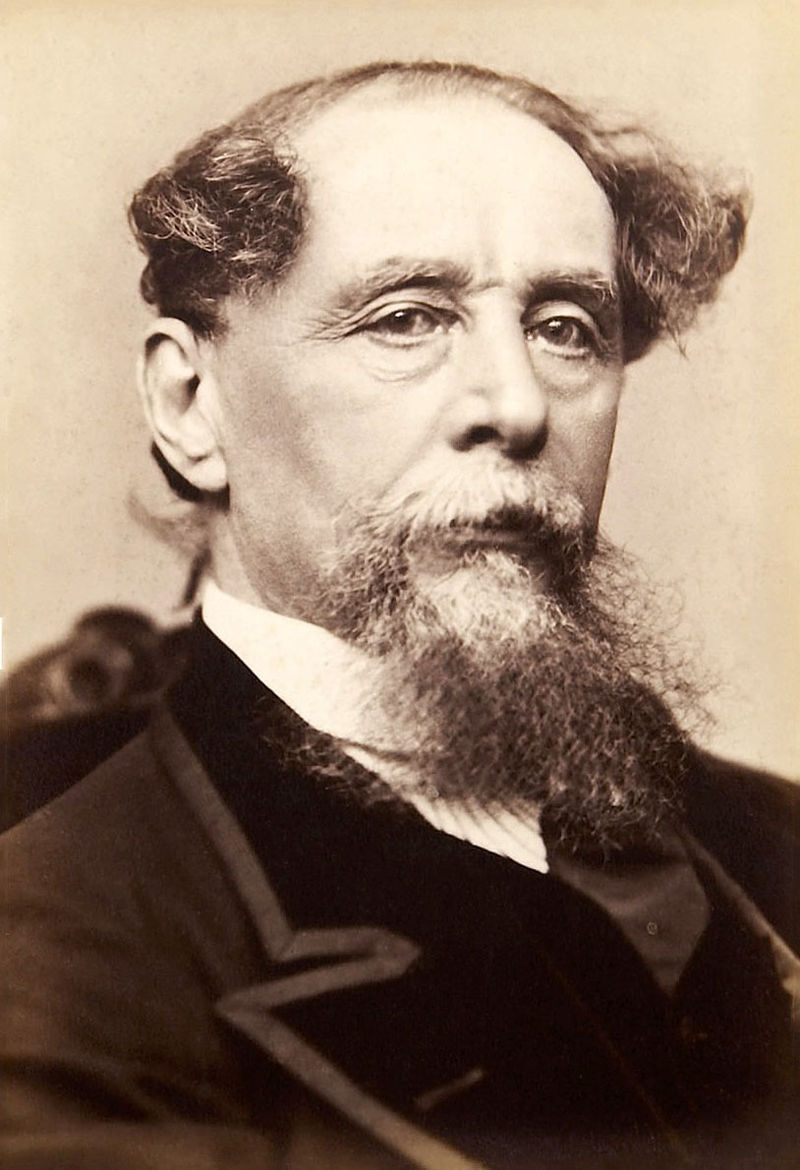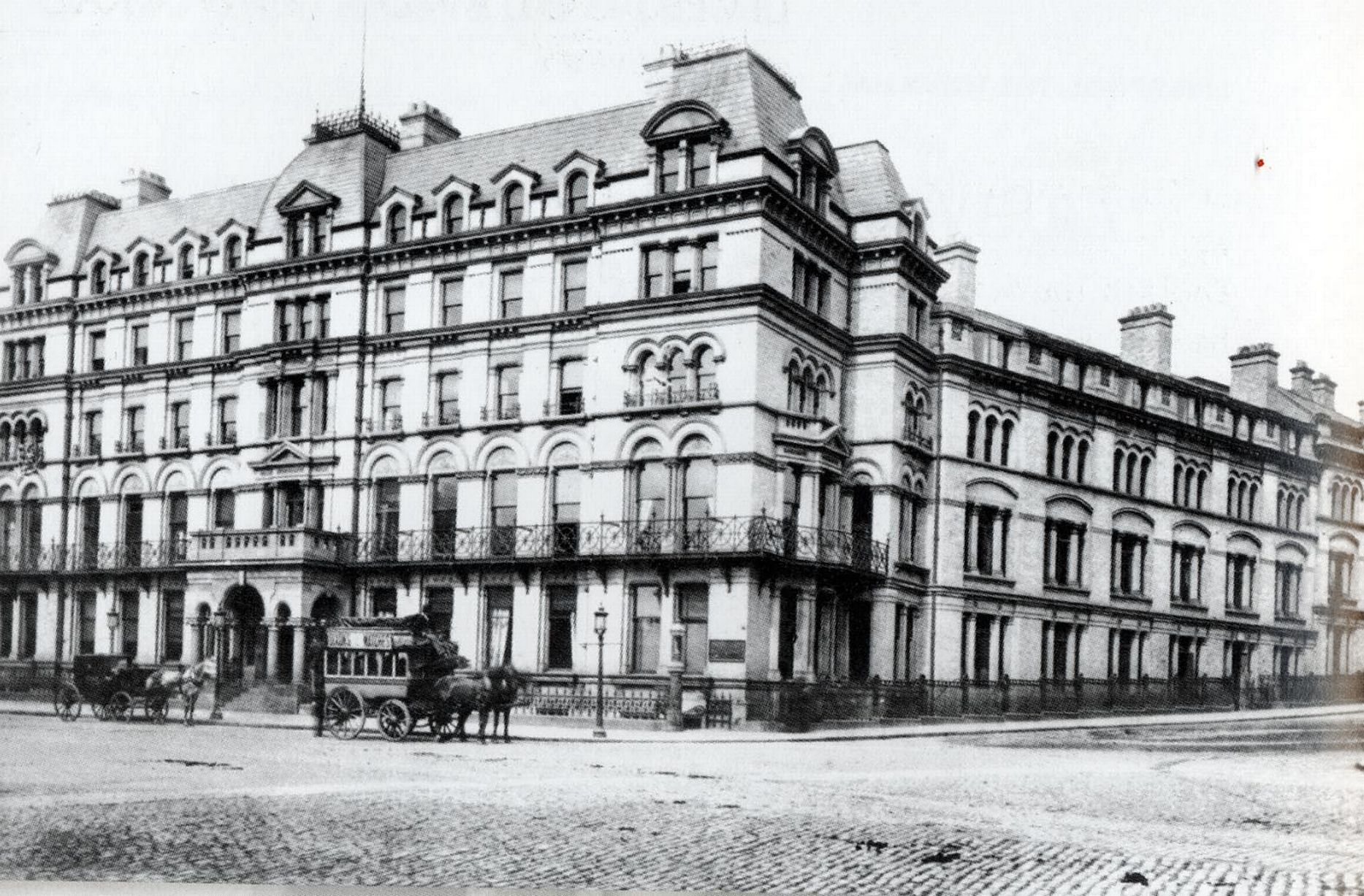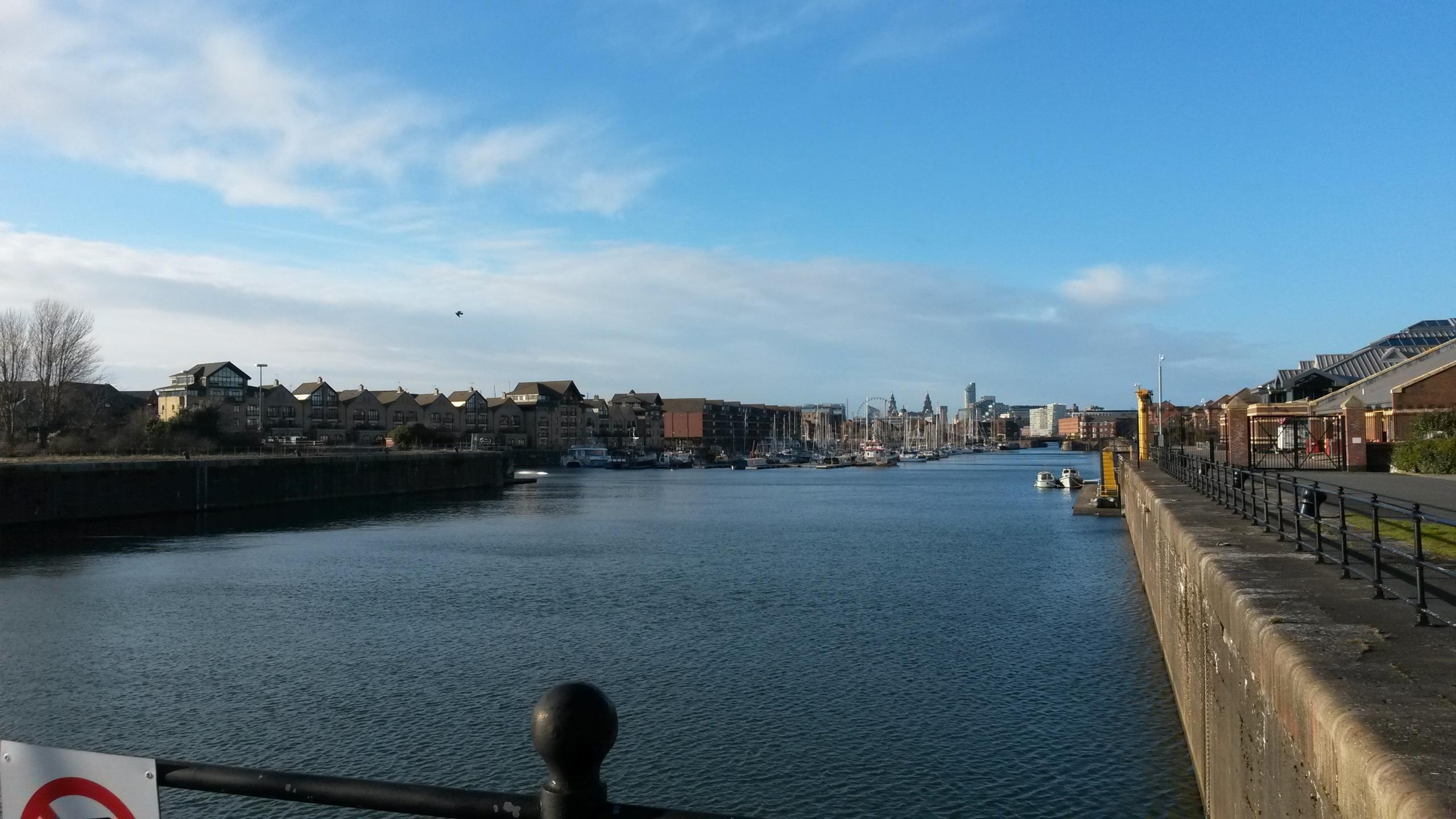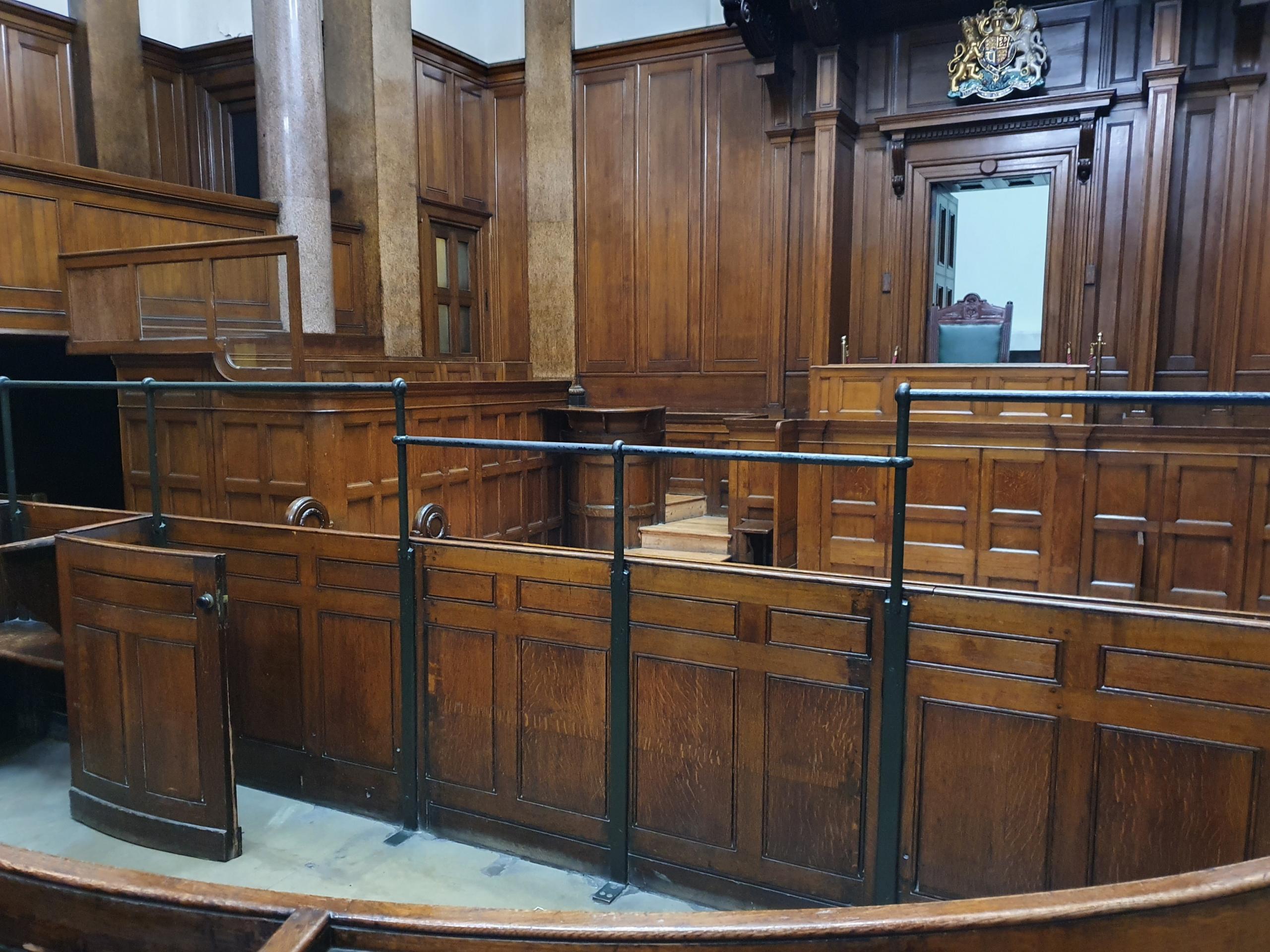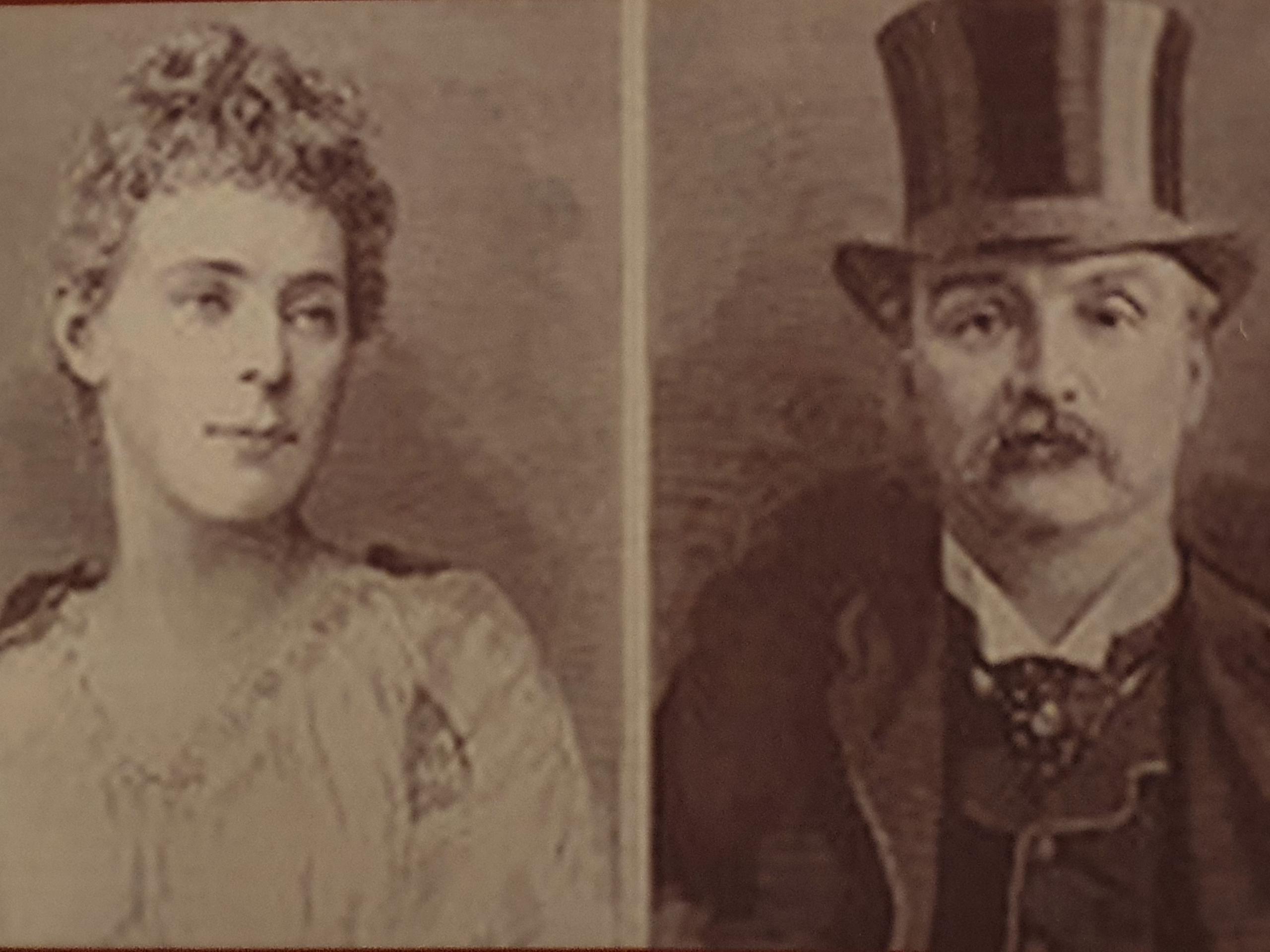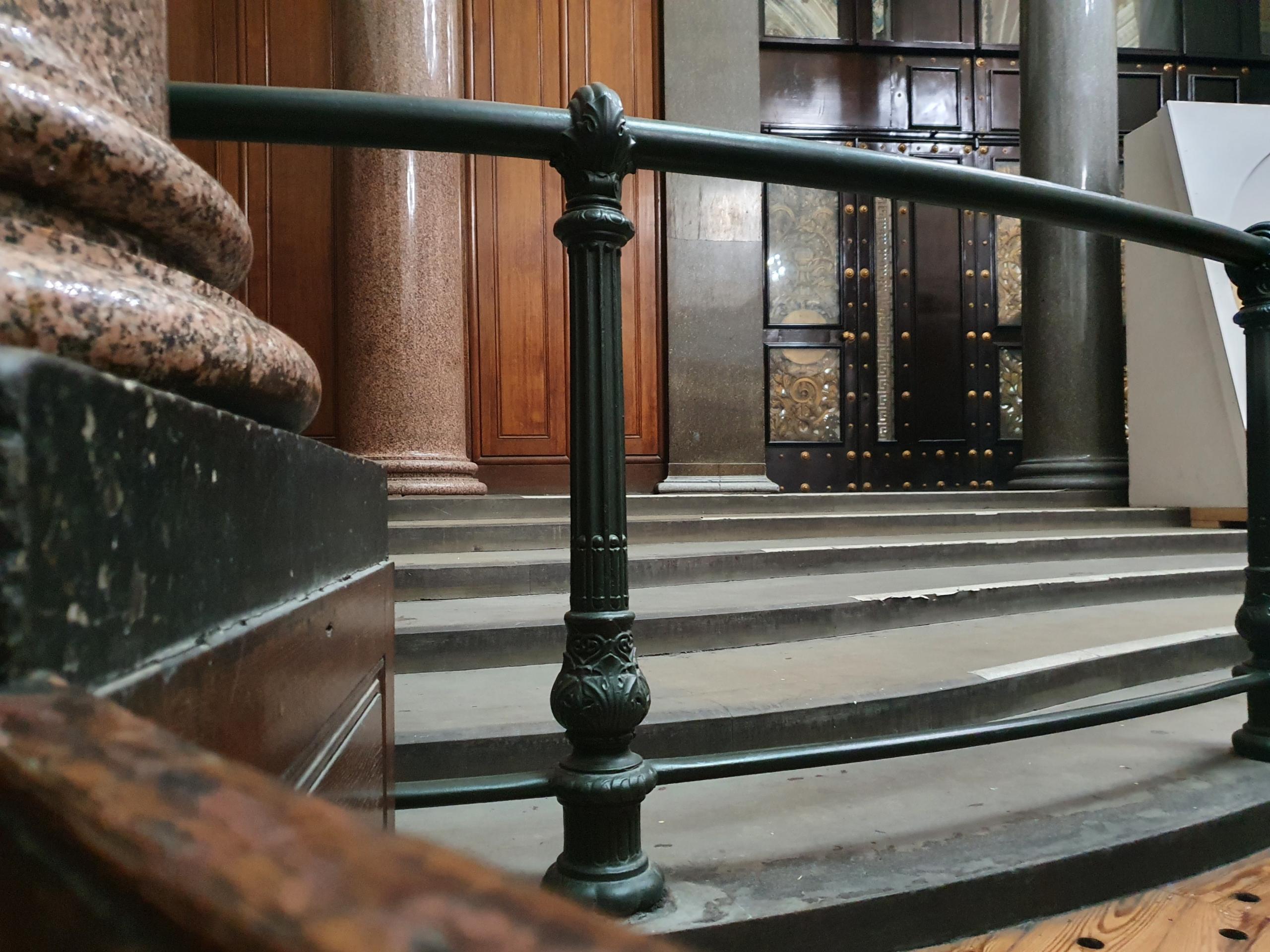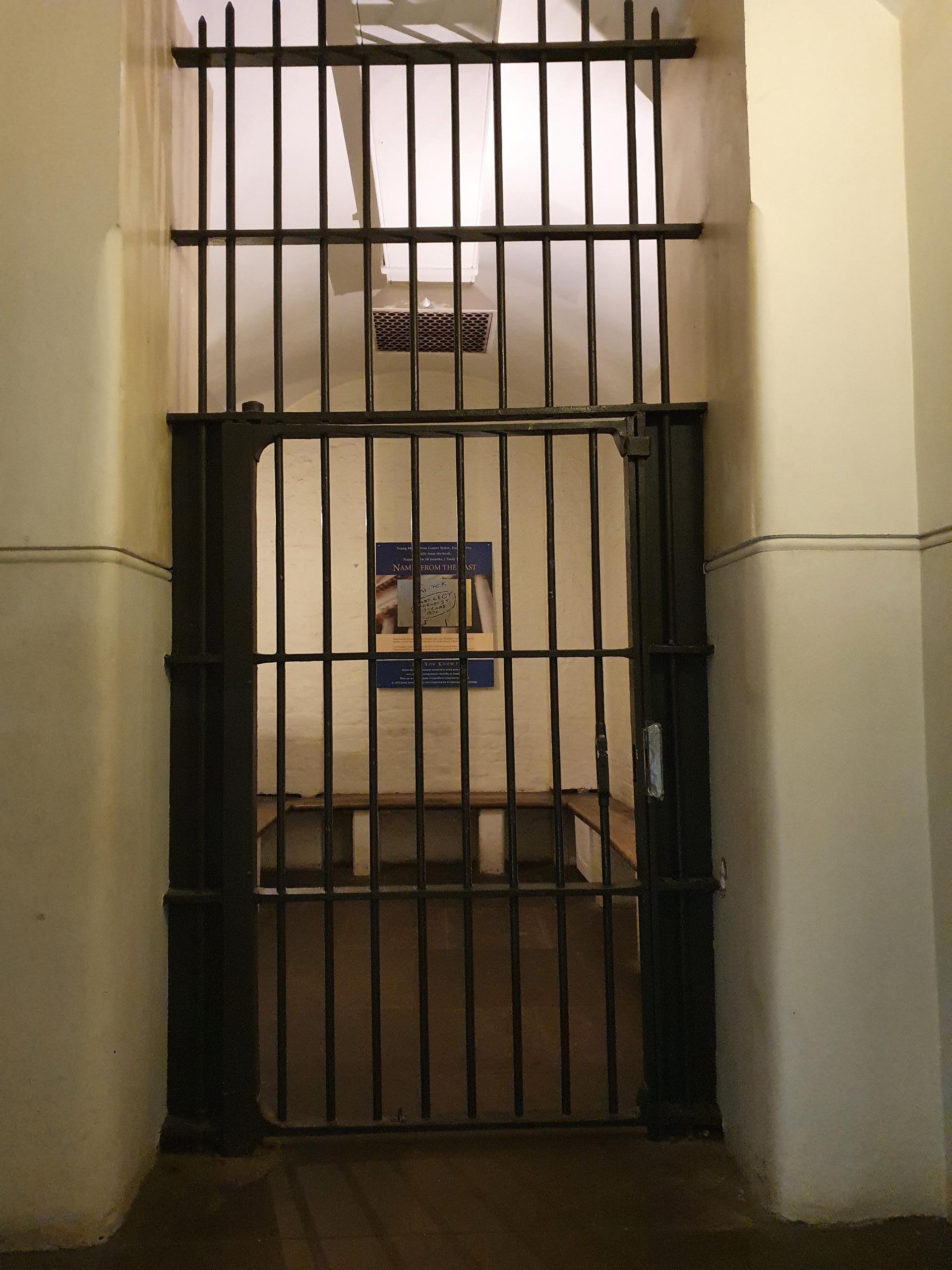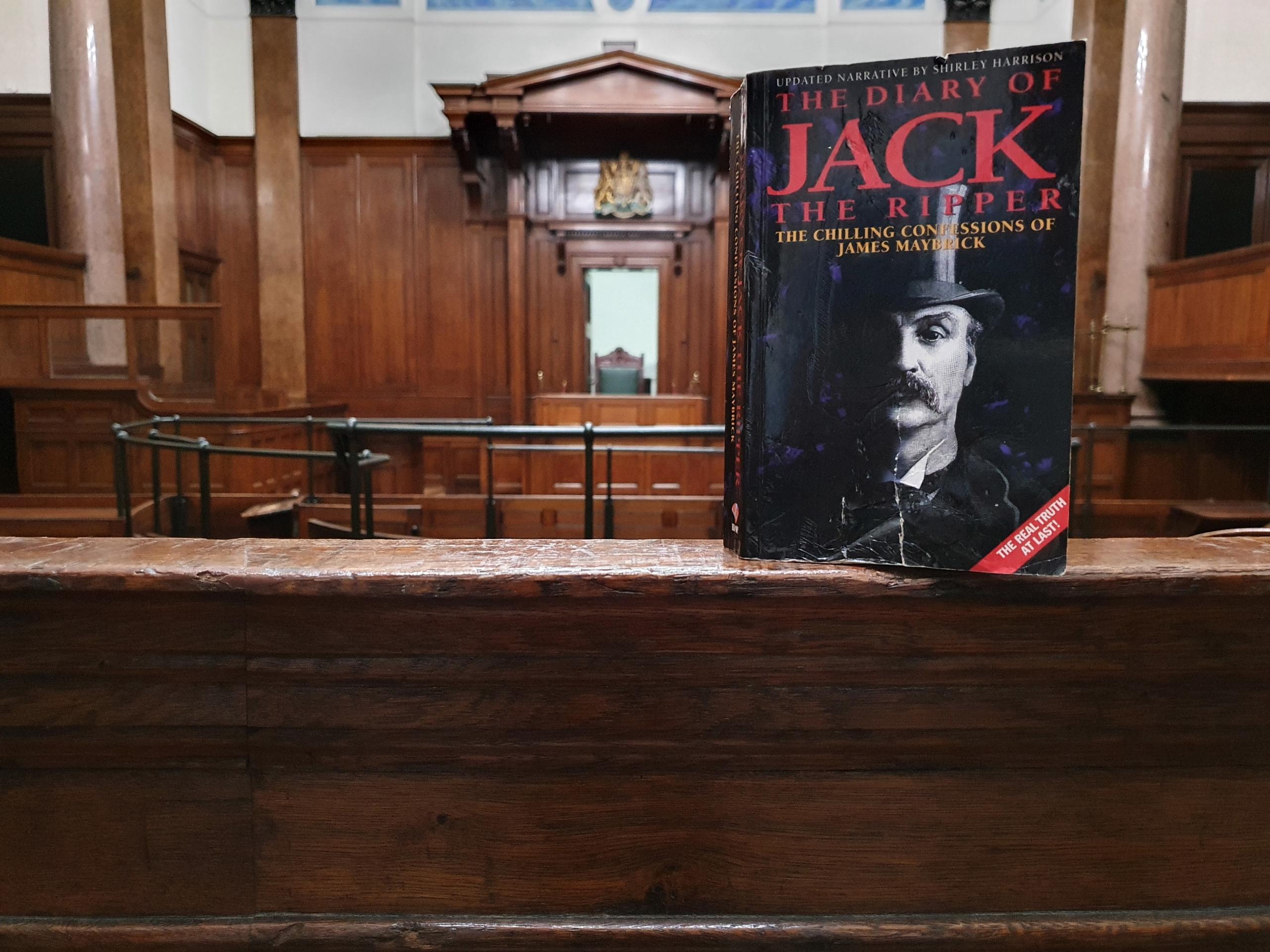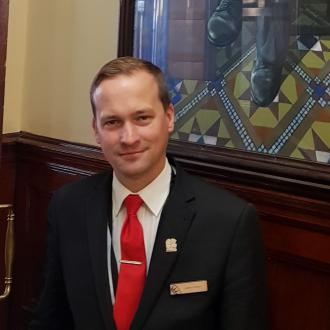Charles Dickens (7 February 1812 – 9 June 1870)
This year, 2020, marks the 150th anniversary of the death of one of Britain’s most famous authors: Charles John Huffam Dickens. Born in Portsmouth on 7 February 1812, Dickens moved to Chatham in Kent while he was still young for his father’s work as a pay office clerk for the Royal Navy. From the age of 10, he lived in London and later Kent.
However, Dickens had reason to visit Liverpool many times during his adult life as a writer, actor and public reader, and was inspired and influenced by his visits to the city. In fact, he mentioned Liverpool in his novels more times than anywhere else outside of London, as reported in the Liverpool Echo.
More specifically, he had a particular fondness for St George’s Hall, describing it as “our old friend” and declaring it to be, according to his tour manager, George Dolby, “The most perfect hall in the world”.
In this series of blogs, City Halls guide, James O’Keeffe, explores Charles Dickens’s links to St George’s Hall…
The Maybrick Link
The first time Charles Dickens is known to have visited Liverpool was for pleasure in November 1838, shortly after completing his second full length novel, Oliver Twist.
He next returned in January 1842, in order to sail to America. He included his experience in his travelogue based on his trip, American Notes, which records his first visit to America in 1842.
In the book, he wrote about staying in the Adelphi Hotel, which at that time was owned by a hotelier named James Radley who Dickens described as “my faultless friend”. The current Adelphi Hotel building dates from 1912, but is on the same site as Radley’s original hotel, which opened its doors all the way back in 1826.
The Adelphi Hotel in 1870. This shows the original hotel that stood on the site, which was built in 1826 for the hotelier, James Radley.
Dickens wrote about having an “undeniably perfect” dinner of turtle (the Hotel’s speciality), cold punch with Hock, Champagne and Claret. Dickens did worry, though, about indulging in such rich food and drink the night before a “sea voyage”, or whether a “plain mutton chop and a glass or two of sherry, would be less likely of conversion into foreign and disconcerting material”. He concluded, however, that it all “comes to very much the same thing in the end!”. Dickens would use the Adelphi Hotel on every subsequent visit to Liverpool and wrote in 1848 that not only was the Adelphi the best hotel in Liverpool, it was “one of the very best in England”. Indeed, in 1868, when Dickens travelled to Manchester to give a public reading, he chose to return to Liverpool at the end of the evening to stay in the Adelphi rather than staying in the “gloomy atmosphere of Manchester”, as George Dolby described it. Here, as usual, he was greeted with “an excellent supper”.
Dickens was not alone in his praise for James Radley and his hotel. Nathaniel Hawthorne, American novelist and US Consul, based in Liverpool from 1853-1857, wrote about Radley’s attentiveness to guests when he dined there: “Mr Radley, our landlord, himself attended at the table, and officiated as chief waiter. He has a fortune of £100,000- half a million dollars- and is an elderly gentleman of good address and appearance. In America, such a man would very probably be in Congress; at any rate, he would never conceive the possibility of changing plates, or passing round the table with hock or champagne”. Radley’s success was based on his willingness and ability to please his guests. In 1858, for example, Italian opera singer Pauline Viardot Garcia visited the hotel and Radley made sure he provided her and her companions with Italian food, including genuine Italian macaroni – a rarity in nineteenth century England.
Dickens sailed from Liverpool’s Coburg Dock on the Cunard packet Steamer, Britannia, with his wife and a female servant. He wrote in surprise that a fellow passenger remarked to another, “are you going across?”, meaning to America, as though it was like simply taking the ferry to Birkenhead! Dickens was by no means impressed with the accommodation on board the ship, complaining that his cabin was so tiny that their luggage could “no more be got in at the door…than a giraffe could be forced or persuaded into a flower pot”. He found the 18-day voyage difficult as he suffered from sea sickness very badly. He spent the first two days of the journey in his cabin. When he finally emerged, he found that they were in the middle of a storm, the sky “both dark and wild…the clouds, in fearful sympathy with the waves, making another ocean in the air”.
Coburg Dock today, where Charles Dickens boarded the Britannia to America.
In Chapter 12 of American Notes, Dickens visits a place “at the junction of two rivers” (Ohio and Mississippi) called Cairo City, Illinois. The ground on which Cairo was built, he wrote, was so flat and marshy that “at certain times of the year it is inundated to the house-tops, lies a breeding-place of fever, ague, and death; vaunted in England as a mine of Golden Hope, and speculated in, on the faith of monstrous representations, to many people’s ruins”. He went on: “[It was a] dismal swamp, on which the half-built houses rot away”. Cairo was “a hotbed of disease, an ugly sepulchre, a grave uncheered by any gleam of promise: a place without one single quality, in earth or air or water, to commend it”. Cairo City had been promoted in those “monstrous representations” by a man named Darius Holbrook (1798-1858), who, through his Cairo City & Canal Co., bought up thousands of acres of lower Mississippi land to create the city. He believed that Cairo would be “the most important place” and convinced people to invest in this undeveloped city with the promise of great profits. He even persuaded London banking firm Wright & Co. to invest $1,500,000 in his city in 1838. Just over a year later, John Wright & Co was bankrupt as was Holbrook’s own company. Cairo City collapsed with the disappearance of funds and most of its residents moved away, leaving it in the condition Dickens found it when he visited.
In his next published novel, Martin Chuzzlewit (1842-44), Dickens used Cairo as an inspiration for his “thriving city of Eden”, which promised to be a paradise (as emphasised in the choice of its name) but is actually in the centre of a malarial swamp. Just like Cairo, Eden’s air is “a fetid vapour, hot and sickening as the breath of an oven”. Eden’s sales agent, enticing would-be investors to part with their money for this supposed paradise, is Zephaniah Scadder. An unscrupulous character, Scadder is more than happy to sell swamp land to investors: “every time he spoke something was seen to twitch and jerk up in his throat, like the little hammers in a harpsichord when the notes are struck. Perhaps it was the Truth feebly endeavouring to leap to his lips. If so, it never reached them”. Zephaniah was a caricature of Darius Holbrook. Descriptions of the actual character of Darius Holbrook are mixed, described as having “force of character, strong will”, enthusiastic and confident in his own success. His only daughter, Caroline, described him as being of “great ability and large personal influence”. On the other hand, others described him as being “unscrupulous” and someone who had a “reckless greed of power and money”.
Interestingly, Darius Holbrook was also the grandfather of a lady named Florence Maybrick (nee Chandler 1862-1941), an American heiress from Mobile, Alabama, who was at the centre of one of the most famous trials of the nineteenth century held right here in Court Number One, St George’s Hall.
Dock of Court Number One, where Florence sat during her trial.
In 1889, 27 year-old Florence stood trial in this building accused of murdering her husband, cotton merchant James Maybrick (1838-1889), by means of poisoning by arsenic. Florence and James had lived in Battlecrease House, Aigburth with their two children James and Gladys from 1884. Their marriage was an unhappy and abusive one. James, 23 years Florence’s senior, would often physically attack and beat his wife. He was also a serial adulterer with a long-term mistress in London. To the outside world, however, James and Florence were affluent, well-to-do, members of Liverpool society.
An image of Florence and James, from an information board in a prisoner cell at St George’s Hall.
Florence, in the face of her husband’s physical and emotional cruelty, sought affection elsewhere and she embarked upon an extra-marital affair of her own in early 1889 with a Liverpool cotton broker, Alfred Brierley. In the March of that year they stayed together in a London hotel for three consecutive nights under the name of “Mrs Thomas Maybrick”.
Later that month, Florence attended the Grand National at Aintree Racecourse and spent most of her time with Brierley walking arm-in-arm with him. This was despite her husband’s presence at the event. Other racegoers commented on it to James and that evening, upon returning home, he physically assaulted his wife. James gave Florence a black eye and tore her dress. He attempted to throw her out of the house but their servants intervened to prevent her ejection.
In the weeks that followed, James became ill and on 11 May 1889 he died. The finger of suspicion very quickly fell on Florence and she was soon in the frame of her husband’s murder.
Members of James’s family had already become mistrustful of Florence when James’s brother Michael was given a letter by the pair’s servant, written by Florence to Alfred Brierley, which apparently revealed her infidelity.
Also, a nurse who had been employed by James and Florence to provide care for James witnessed Florence putting a white powder into a bottle of meat juice that was next to James’s bed. Later tested by a doctor, this bottle was found to have contained arsenic. Despite the fact that the medical examinations of James’s body, when he died, only contained a tiny amount of arsenic and that the meat juice had not been used, Florence was arrested for his murder, based on the belief she had poisoned him with the substance.
The trial, commencing 31 July 1889 with its tale of adultery, poison and murder was sensational, capturing the public imagination and hitting the headlines in newspapers across the country. Court Number One was crammed full of people – there was even standing room at the back of the court. During the trial, the prosecution put forward the argument that Florence had administered the poison by means of a solution made from dipping arsenic-laced fly paper in water. Her counsel, Sir Charles Russell, highlighted the contradictory medical evidence and the prosecution’s failure to find a definite cause of death. He also argued that James did not die by arsenic poisoning, but of gastroenteritis caused by chemical irritation. James had arsenic in his system, Russell argued, because he was a well-known hypochondriac who would take numerous patented medicines and was known to take small quantities of arsenic, which he believed acted as a restorative and even an aphrodisiac. During his final illness, he had been given strychnine, arsenic, jaborandi, cascara, henbane, morphia, prussic acid, papaine, iridin, and other medicine. The Maybricks had a huge collection of medicines and poisons in their home.
Standing room at the back of the court was crammed full of spectators during the Florence Maybrick trial.
However, the letter to Alfred Brierley that Florence had written would be devastating to Florence’s defence. The letter revealed Florence’s affection for Brierley. After this evidence, Florence admitted to her transgression, but rather than the courtroom understanding her unhappiness of being trapped in an abusive marriage, there was uproar that this woman had committed adultery and she was even spat at by another woman. Even though James’s infidelity was well-known, Victorians had a different attitude towards male adultery; his misdemeanours could be forgiven. Florence’s adultery, on the other hand, could not.
In the summing up of the trial the judge, Sir James Fitzjames Stephen, made a number of muddled statements and even referred to the “Grand National something. I don’t know if it is a race or a steeplechase or what it is”. He also reminded the jury of Florence’s infidelity which had already inflicted a “dreadful injury” on her husband, and suggested that being an adulteress was no different to being a murderer: “You must consider…a horrible and dreadful thought that a woman should be plotting the death of her husband in order that she might be left at liberty to follow her own degrading vices”. Stephen effectively led the jury to their decision.
Prisoner Cell where Florence waited before the Jury’s verdict which took only 43 minutes. Here, she would have been able to hear the noise of the courtroom.
On 7 August, Florence Maybrick was convicted and sentenced to death. The crowds outside the Hall greeted the Judge with a hostile reception after hearing news of the verdict.
After a public outcry, with many arguing that Florence had been convicted of adultery rather than murder, Henry Matthews, the Home Secretary, re-examined the case, and concluded “that the evidence clearly establishes that Mrs Maybrick administered poison to her husband with intent to murder; but that there is ground for reasonable doubt whether the arsenic so administered was in fact the cause of his death”. Her death sentence was commuted to a penal servitude for life. Queen Victoria was displeased by Matthews’s ruling, complaining in a letter that “so wicked a woman should escape by a mere legal quibble!”.
Despite the commutation of the death sentence, Florence was by no means free. She served a “torturous” 15-year prison sentence, mainly in the walls of Woking Prison where she was in solitary confinement. Many believed that Florence’s continued imprisonment was due to the Queen’s disapproval of her on moral grounds. When Queen Victoria died, an American poet named Ophelia Lawrence Blair wrote “God’s Justice Will Be Done”. In it, the poet compares the outpouring of grief of a nation at the loss of their queen compared to Queen Victoria’s own lack of compassion towards Florence Maybrick:
“In Woking Prison no hand came to save The Prisoner, Florence Maybrick, from the queenly frown. Not for her was womanly compassion shown, Far from America she sits today alone”.
When she was finally released in 1904, Florence spent the rest of her life in America. She ended up destitute, living in little more than a shack in South Kent, Connecticut until she died on 23 October 1941. She never saw her children ever again.
As for whether Florence was guilty of murdering her husband or not, that remains unclear, but her treatment by the justice system was framed more by her confession to adultery than anything to do with the murder she was accused of having committed.
If there can be any positive to be taken from this sad tale of Florence, it is that her harsh treatment at the hands of the law had caused such public outcry that it contributed to the introduction of a formal appeal process which would allow defendants to appeal against their convictions. Also, Florence’s case spurred on women’s rights campaigners, including Liverpool’s own Josephine Butler, to push for women to be able to serve on juries.
It’s been said that the history of St George’s Hall is the history of Liverpool. The link between Florence Maybrick and Charles Dickens puts an interesting perspective on that idea: how two individuals who never met could be connected through their interactions with this building: St George’s Hall.
As an aside, James Maybrick is also known for being a “Jack the Ripper” suspect. In the early 1990s, a diary was discovered, purportedly written by James Maybrick. In it, he confesses to being Jack the Ripper!
Sources
- Trevor L Christie, Etched in Arsenic (1968)
- Kate Colquhoun Did She Kill Him? (2014)
- Charles Dickens American Notes (1842)
- Charles DickensMartin Chuzzlewit (1844)
- George Dolby Charles Dickens As I Knew Him (1885)
- Shirley Harrison The Diary of Jack the Ripper (1993)
- John M Lansden A History of the City of Cairo, Illinois (1910)
- Florence Maybrick My Fifteen Lost Years (1905)
- James O’Donald Mays Mr Hawtorne Goes to England (1983)
- Peter Pellizzari, “Charles Dickens, Cairo and the Panic of 1837” in Journal of the Illinois State Historical Society Vol. 111 No. 4 (2018) pp.9-42 www.jstor.org/stable/10.5406/jillistathistsoc.111.4.0009
About James O’Keeffe
James works as one of the official guides of Liverpool’s City Halls. He has worked in his role for 12 years and delivers a wide range of tours in St George’s Hall and Liverpool Town Hall, including the monthly guided tours, St George’s Hall Film tours, Footman tours and the special ‘Walk the Floor’ tours during the Minton Floor Reveal.
He also helps to animate events in the buildings including the traditional Toasting of the Haggis at the Burns Night Ceilidh and Dickens Readings in St George’s Hall’s Concert Room.
With a Master’s Degree in History, James’s passion is British history with a particular interest in all things Liverpool.
